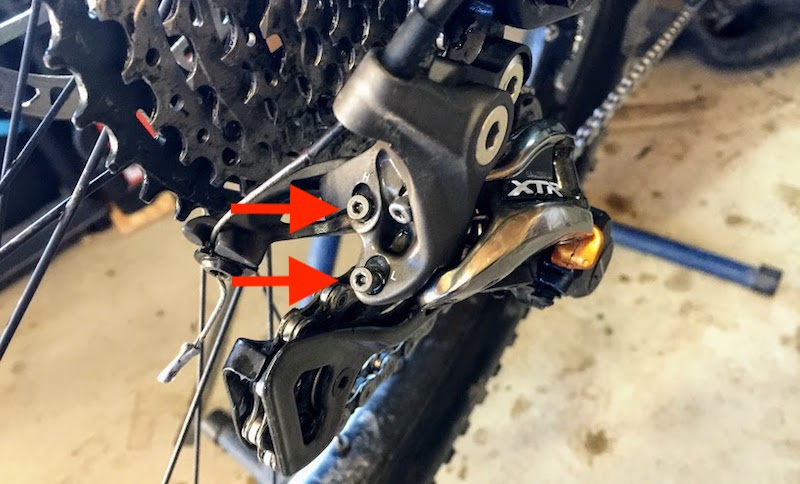


How To Adjust Gear Shifter on Bike
Read More : “How To Clean A Mountain Bike? “
Are you tired of clunky gear shifts while riding your bike? Learning how to adjust the gear shifter on your bike can make a world of difference in your cycling experience.
A properly adjusted gear shifter ensures smooth and precise shifting, allowing you to tackle challenging terrains effortlessly.
In this comprehensive guide, we’ll take you through the step-by-step process of adjusting your bike’s gear shifter, regardless of whether you have a mountain bike, road bike, or hybrid bike.
Whether you’re a beginner or an experienced cyclist, mastering this skill will give you better control over your bike and make every ride a joyous adventure.
So, let’s dive in and learn how to fine-tune your bike’s gear shifter for the ultimate riding experience.
Understanding Your Bike’s Gear Shifter
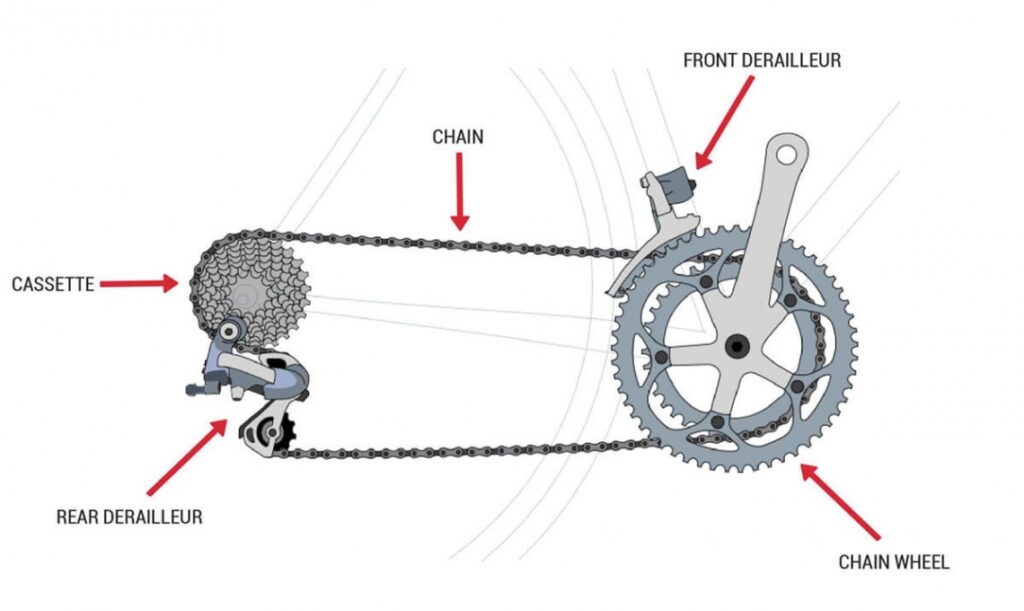


Understanding your bike’s gear shifter is crucial before attempting any adjustments. The gear shifter is a mechanism that controls the movement of the bike’s chain, allowing you to change gears and adapt to various terrains.
Read More : ” Why Are Mountain Bikes So Expensive? “
There are two primary types of gear shifters: trigger shifters and grip shifters.
Trigger shifters are located on the handlebars and typically have two levers—one for shifting to higher gears and the other for lower gears. Grip shifters, on the other hand, are integrated into the handlebar grips and work by twisting them to change gears.
To understand your bike’s gear shifter, it’s essential to know the number of gears it has and the gear ratios for different terrains. Lower gears are suitable for uphill climbs and rough terrains, while higher gears offer more speed on flat surfaces or downhill.
Before adjusting your gear shifter, familiarize yourself with the gear indicator or the feel of shifting between gears.
This understanding will help you identify any issues and make precise adjustments for a smoother and more enjoyable riding experience.
Tools You’ll Need for Adjustment



Before you start adjusting your bike’s gear shifter, it’s essential to gather the necessary tools.
Read More : ” Is Biking Hard On Knees? “
Here are the tools you’ll need for the adjustment:
Screwdriver: A Phillips or flathead screwdriver, depending on the type of gear shifter, is essential for loosening or tightening screws.
Allen Wrenches: Most modern bikes use Allen screws to secure the gear shifter to the handlebars. Having a set of Allen wrenches in various sizes will ensure you have the right tool for the job.
Lubricant: A good bike lubricant is essential for ensuring smooth and precise shifting. You’ll need to apply lubricant to the moving parts of the gear shifter after making adjustments.
Clean Cloth: A clean cloth will help you wipe away any dirt, grime, or excess lubricant that may accumulate during the adjustment process.
Workstand (optional): While not necessary, a workstand can make the adjustment process more convenient by elevating the bike and allowing easy access to the gear shifter.
Having these tools ready will make the adjustment process smoother and help you achieve precise and reliable shifting on your bike.
Remember to work in a well-lit and clean area to avoid losing small screws or components during the adjustment. If you’re unsure about the process, it’s always a good idea to consult a professional bike mechanic for guidance.
Step-by-Step Guide to Adjusting the Gear Shifter



Adjusting the gear shifter on your bike is a relatively straightforward process that can greatly improve your riding experience.
Read More : ” Which Bike Gear For Uphill? “
Here’s a step-by-step guide to help you through the adjustment:
Identify the Type of Shifter: There are various types of gear shifters, such as trigger shifters, grip shifters, and thumb shifters. Identify the type of shifter on your bike before proceeding.
Place the Bike on a Stand: Elevate your bike on a work stand or flip it upside down, ensuring it’s stable and secure.
Shift to the Highest Gear: Use the shifter to shift the chain to the smallest chainring and the largest cog on the rear cassette.
Locate the Barrel Adjuster: On most shifters, there is a barrel adjuster near the cable attachment point. It’s usually a small, threaded barrel that can be turned to adjust the tension in the cable.
Fine-Tune Cable Tension: If the shifting is sluggish or hesitant, turn the barrel adjuster clockwise to add tension to the cable. If the shifting is overly tight, turn it counterclockwise to reduce tension.
Check All Gears: Shift through all gears to ensure smooth and precise shifting. Make any necessary adjustments to the barrel adjuster until shifting is optimal.
High and Low Limit Screws: If your bike has a rear derailleur, there are high and low limit screws that control how far the derailleur can move. Adjust these screws as needed to prevent the chain from falling off the gears.
Lubricate Moving Parts: After making adjustments, apply bike lubricant to the pivot points of the derailleur and the gear shifter to ensure smooth movement.
Test Ride: Take your bike for a test ride and verify that the gear shifting is smooth and accurate. Make further adjustments if needed.
By following this step-by-step guide, you can ensure that your bike’s gear shifter functions optimally, providing you with a more enjoyable and efficient cycling experience.
If you’re uncertain about any step, consider seeking assistance from a professional bike mechanic.
Troubleshooting Common Issues
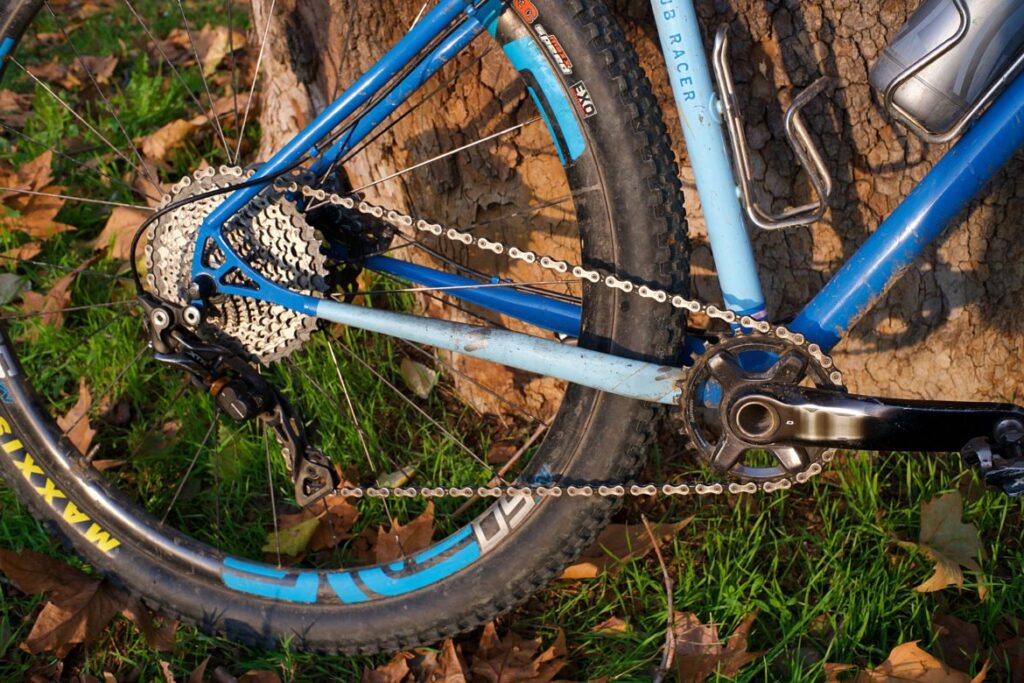


When adjusting the gear shifter on your bike, you may encounter some common issues that can affect the shifting performance.
Read More : ” Top Five Electric Bikes “
Here’s how to troubleshoot and resolve these problems:
Chain Skipping: If your chain skips or slips when shifting, it could be due to a worn chain or cassette. Check for wear on the chain and cassette teeth. If they are visibly worn, consider replacing them to improve shifting.
Cable Friction: Friction in the gear shifter cable can cause sluggish shifting. Inspect the cable for any kinks or damage, and lubricate it with bike-specific cable lubricant. This will ensure smooth cable movement.
Poor Shifting Precision: Inaccurate shifting can result from misalignment in the gear shifter. Check if the shifter is securely attached to the handlebars and make any necessary adjustments to realign it.
Chain Rubbing: If the chain rubs against the front derailleur or chainring, it may require slight adjustments. Use the barrel adjuster to fine-tune the front derailleur’s position, ensuring the chain runs smoothly.
Ghost Shifting: Ghost shifting occurs when the chain unexpectedly shifts on its own. This problem can be caused by a misaligned derailleur hanger. If this is the case, it’s best to seek help from a bike mechanic to realign it accurately.
Hesitant Shifting: If shifting feels hesitant or delayed, the gear cable tension may need adjustment. Use the barrel adjuster to increase or decrease cable tension until the shifting becomes smoother.
Noisy Shifting: Unusual noises while shifting could indicate loose components. Ensure that all bolts and screws on the derailleur and shifter are tightened properly.
Gear Skipping: Skipping gears can happen if the limit screws are misadjusted. Check the high and low limit screws on the rear derailleur and adjust them to prevent the chain from falling off the gears.
By troubleshooting these common issues, you can enhance your bike’s gear shifting performance and enjoy a smoother, more efficient ride. Always perform adjustments with care and attention to detail to ensure your bike functions optimally.
If you encounter complex issues or are uncertain about making adjustments, it’s advisable to seek assistance from a professional bike mechanic.
Maintenance Tips for Smooth Shifting
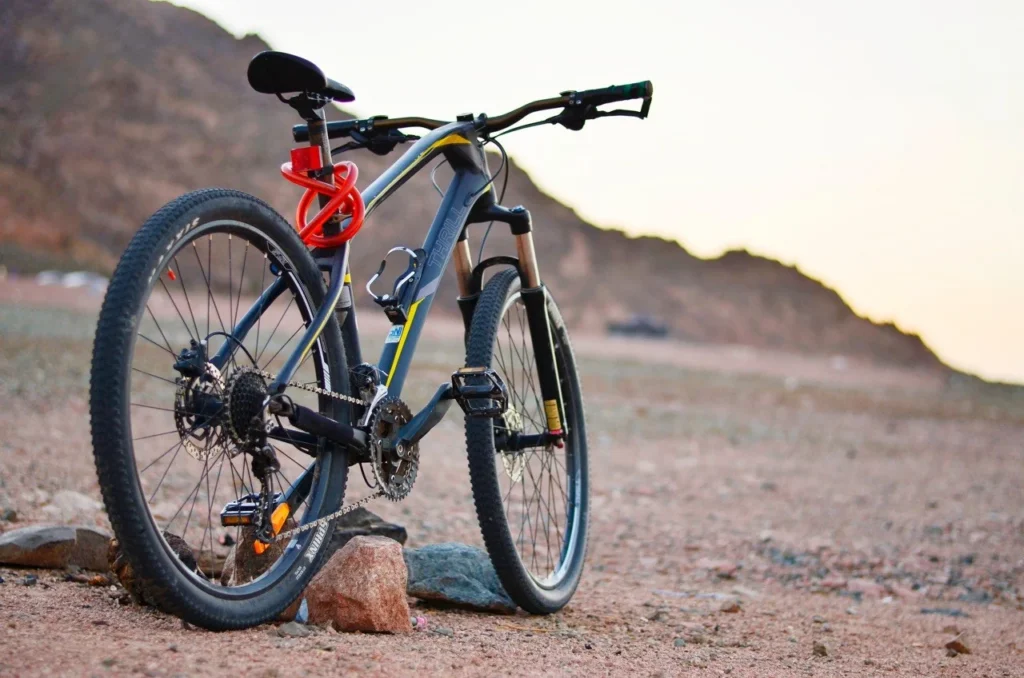


Smooth shifting is essential for a pleasant and efficient riding experience. Regular maintenance can ensure your bike’s gear system remains in top condition.
Here are some maintenance tips for smooth shifting:
Keep it Clean: Clean your bike regularly to prevent dirt and debris from affecting the gear system. Use a mild soap or bike-specific cleaner and a soft brush to clean the drivetrain, including the chain, cassette, and derailleurs.
Lubricate the Chain: Apply lubricant to the chain after cleaning to reduce friction and ensure smooth movement. Use a quality bike chain lube and wipe off any excess to avoid attracting more dirt.
Check Cable Tension: Over time, gear cables may stretch or become loose, affecting shifting performance. Inspect cable tension regularly and use barrel adjusters to fine-tune as needed.
Inspect the Derailleurs: Check the front and rear derailleurs for proper alignment and adjustment. Ensure they move smoothly without any binding or resistance.
Monitor Chain Wear: A worn-out chain can lead to poor shifting and accelerated wear on the cassette and chainrings. Use a chain wear indicator to assess chain wear regularly and replace it when needed.
Check Gear Hanger Alignment: The gear hanger, the small metal piece that connects the derailleur to the frame, can become misaligned due to accidental impacts. Check the alignment and have it straightened if necessary.
Adjust Limit Screws: The limit screws on the front and rear derailleurs control the range of movement and prevent the chain from shifting off the gears. Make sure they are correctly adjusted to avoid issues like chain dropping or rubbing.
Replace Worn Components: Over time, cassette cogs, chainrings, and jockey wheels on the rear derailleur can wear out. Replace worn components promptly to maintain smooth shifting.
Use Proper Shifting Techniques: Avoid “cross-chaining,” where you use extreme gear combinations, as it can stress the drivetrain. Shift one gear at a time and avoid shifting under heavy load or when the chain is misaligned.
Regular Tune-Ups: Schedule regular bike tune-ups with a professional mechanic to address any complex issues and ensure your bike’s gear system is in optimal condition.
By following these maintenance tips, you can extend the life of your bike’s gear system and enjoy a seamless shifting experience on your rides.
A well-maintained drivetrain not only enhances performance but also reduces the risk of costly repairs in the long run.
Gear Shifter Adjustment for Different Bike Types
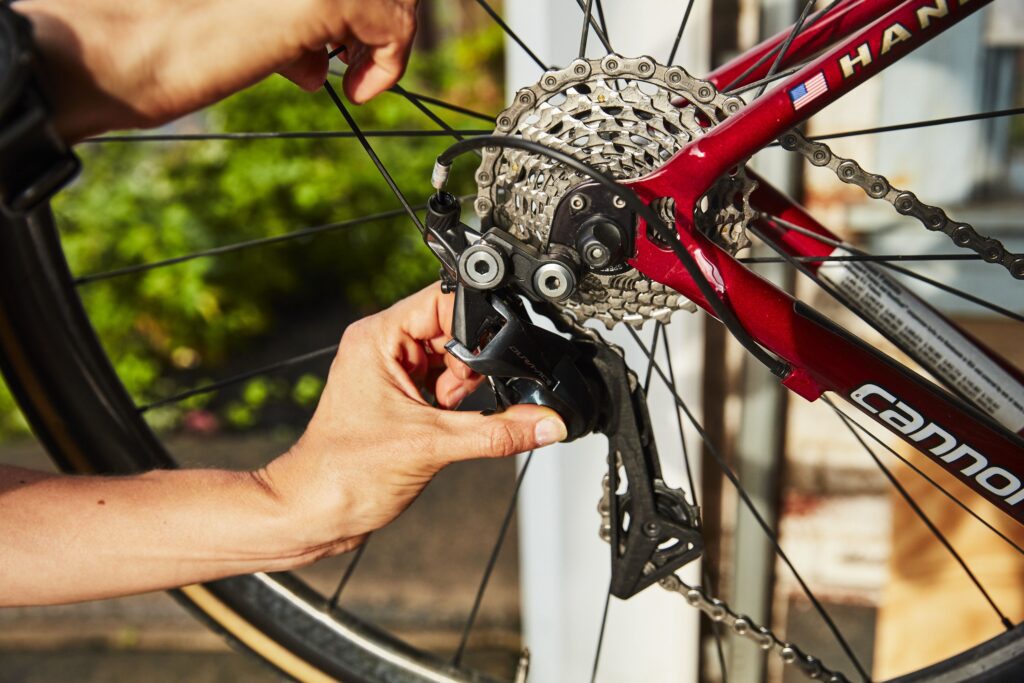


Gear shifter adjustment may vary depending on the type of bike you have. Different bike types, such as road bikes, mountain bikes, and hybrid bikes, often have distinct gear systems and shifting mechanisms.
Here’s a detailed explanation of gear shifter adjustment for different bike types:
Road Bikes:
Road bikes typically have a dual control lever system integrated with the brake levers, called “brifters.” The right brifter controls the rear derailleur (cassette), and the left brifter controls the front derailleur (chainrings).
To adjust the shifting on a road bike, start by ensuring that the derailleurs are properly aligned and the cables are tensioned correctly.
Fine-tune the shifting using barrel adjusters located on the brifters. Clockwise rotation increases cable tension, allowing for smoother shifting to higher gears, and counterclockwise rotation does the opposite.
Use the limit screws on the derailleurs to prevent chain over-shifts and ensure the chain stays on the gears without falling off.
Mountain Bikes:
Mountain bikes often come with trigger shifters or grip shifters. Trigger shifters have separate levers for upshifting and downshifting, while grip shifters rotate around the handlebars to change gears.
Adjusting the shifting on a mountain bike involves checking cable tension, making sure the derailleurs are aligned correctly, and fine-tuning with barrel adjusters.
Additionally, adjust the clutch on the rear derailleur (if equipped) to control chain tension and minimize chain slapping on rough terrains.
Hybrid Bikes:
Hybrid bikes typically use trigger shifters or twist shifters similar to mountain bikes. Some hybrids may have brifters similar to road bikes.
Follow the same steps as adjusting a mountain bike or road bike, ensuring proper cable tension, alignment, and using barrel adjusters for fine-tuning.
Internal Gear Hub Bikes:
Bikes with internal gear hubs have a different shifting system where the gears are enclosed within the rear hub. Shifting is done using a single shifter with numbered or labeled positions.
Adjusting an internal gear hub involves making sure the shifter cable is tensioned correctly and using the barrel adjuster to fine-tune the shifting. Some hubs may have additional external adjustments.
Single-Speed Bikes:
Single-speed bikes have only one gear and do not require gear shifter adjustment. However, you may need to ensure that the chain tension is appropriate for smooth pedaling.
Remember, adjusting gear shifters can be complex, and if you’re unsure or encounter significant issues, it’s best to seek help from a professional bike mechanic.
Properly adjusted gear shifters result in seamless shifting, efficient riding, and a more enjoyable cycling experience.
Expert Tips for Optimal Shifting Performance



Optimal shifting performance is essential for a smooth and efficient ride on your bike.
Here are some expert tips to achieve the best shifting performance:
Regular Maintenance:
Keep your bike well-maintained with regular cleaning, lubrication, and inspections. Clean drivetrain components, such as chain, cassette, and chainrings, to prevent dirt and grime from affecting shifting.
Cable and Housing:
Check and replace cables and housing regularly, as they can wear out and cause poor shifting performance. Ensure cables are properly seated and tensioned for accurate shifting.
Chain and Cassette Wear:
Monitor chain and cassette wear. A worn chain can lead to poor shifting and accelerate cassette wear. Replace the chain before it excessively stretches to prolong the life of the cassette.
Barrel Adjusters:
Understand how barrel adjusters work on your shifters and derailleurs. These small screws allow for fine-tuning cable tension, which can make a significant difference in shifting accuracy.
Limit Screws:
Learn how to adjust limit screws on derailleurs. Properly set limit screws prevent the chain from falling off the gears and ensure smooth shifting across the entire range.
Shifter Paddle Positioning:
Position your shifter paddles for optimal reach and comfort. You should be able to shift easily without stretching or changing your grip on the handlebars.
Shift Timing:
Anticipate gear changes and shift before you need the lower or higher gear. Avoid shifting under heavy load to reduce stress on the drivetrain and chain.
Chainline Alignment:
Ensure your chainline is straight. Misaligned chainlines can cause noise and friction while shifting. Proper chainline alignment enhances shifting performance and reduces wear.
Check Derailleur Hanger:
Regularly inspect the derailleur hanger for damage or misalignment. A bent hanger can lead to poor shifting and potential damage to the drivetrain.
Proper Shifting Technique:
Develop smooth shifting techniques. Lightly ease the pressure on the pedals while shifting to allow the chain to move smoothly between gears.
Indexing and Tensioning:
Properly index the gears to ensure precise alignment of the chain on each gear. Tension the shift cable appropriately to optimize shifting accuracy.
Consider Upgrades:
Upgrading to higher-quality shifters, derailleurs, or other drivetrain components can enhance shifting performance, but make sure they are compatible with your bike.
Regularly following these expert tips will help maintain optimal shifting performance, extend the lifespan of your drivetrain, and provide a more enjoyable cycling experience.
If you’re unsure or encounter persistent shifting issues, seek advice from a professional bike mechanic.
Wrapping Up: Enjoy Your Newly Adjusted Gear Shifter!
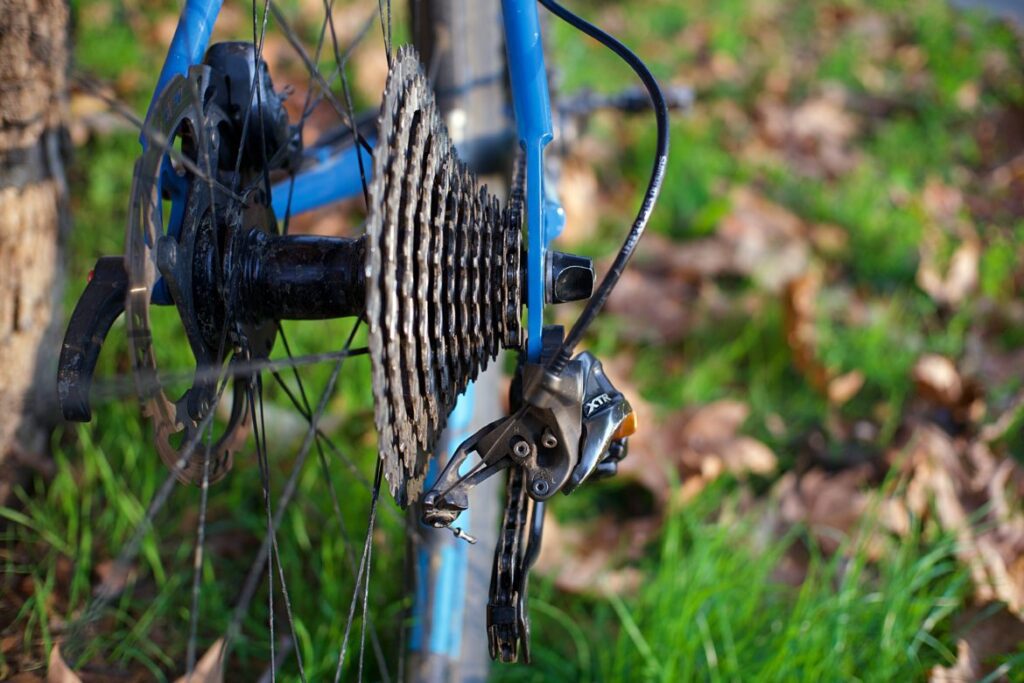


As you wrap up adjusting your gear shifter, you can look forward to a more enjoyable and efficient cycling experience.
Taking the time to fine-tune your gear shifter ensures smooth and precise gear changes, eliminating any frustrations caused by poor shifting performance.
Here’s how to enjoy your newly adjusted gear shifter:
Test the Shifting:
Before heading out on your next ride, take your bike for a test spin. Shift through all gears to ensure smooth transitions and accurate shifting across the entire range.
Smooth Gear Changes:
With the gear shifter properly adjusted, you’ll notice how effortlessly and seamlessly the chain moves from one gear to another, allowing you to maintain a consistent cadence on any terrain.
Improved Efficiency:
A well-adjusted gear shifter enhances the efficiency of your cycling. Quick and precise gear changes enable you to respond to varying conditions, such as ascents, descents, and flats, with ease.
Enhanced Riding Experience:
Enjoy a more enjoyable and stress-free ride. With reliable shifting, you can focus on the road or trail ahead, knowing that your bike’s drivetrain will respond precisely to your commands.
Prolonged Drivetrain Lifespan:
Proper gear shifter adjustments reduce wear and tear on the drivetrain components. This means your chain, cassette, and derailleurs will last longer, saving you money on replacements.
Climbing Made Easier:
Climbing steep hills becomes less challenging when you can smoothly shift to lower gears. Your bike’s adjusted gear shifter will provide the gearing you need to conquer demanding ascents.
Confidence in Gear Changes:
A well-tuned gear shifter instills confidence in your bike’s performance. You can trust that it will respond accurately to your shifting commands, giving you more control over your ride.
Ready for New Challenges:
Whether you’re exploring new trails or taking on longer rides, your newly adjusted gear shifter ensures you’re prepared for any terrain or riding conditions.
Remember, regular maintenance and periodic gear shifter checks are essential to maintain optimal shifting performance. Embrace the pleasure of a finely tuned gear shifter and experience the freedom and joy of cycling at its best.
If you encounter any issues in the future, don’t hesitate to recheck and make necessary adjustments or seek assistance from a professional bike mechanic
Happy cycling!
Conclusion
Adjusting the gear shifter on your bike is a valuable skill that can greatly enhance your cycling experience. With a properly tuned gear shifter, you’ll enjoy smooth and precise gear changes, improved efficiency, and a more enjoyable ride.
Remember to follow the step-by-step guide and troubleshoot common issues to ensure optimal shifting performance. Regular maintenance and periodic checks will help you maintain the gear shifter in top condition.
So, take the time to fine-tune your gear shifter, and you’ll be ready to enjoy your newly adjusted gear shifter and conquer any terrain with confidence and ease.
FAQ’s
How do you adjust a shifter cable on a bike?
To adjust a shifter cable on a bike, first, loosen the cable anchor bolt, shift to the highest and lowest gears, and fine-tune the tension using barrel adjusters for precise shifting.
Is it easy to adjust bike gears?
Adjusting bike gears can be straightforward with some practice. Basic adjustments like barrel adjusters are simple, but more complex adjustments may require professional help.
How do I make my bike gears shift easier?
To make your bike gears shift easier, adjust the barrel adjuster, keep your drivetrain clean and well-lubricated, and ensure your cables and housing are in good condition.
How do you adjust a road bike shifter?
To adjust a road bike shifter, start by checking cable tension and barrel adjusters. Then, fine-tune the shifting using limit screws and indexing adjustments as needed.
How do you adjust a shift lever?
To adjust a shift lever, first, locate the barrel adjuster on the shifter. Rotate it to tighten or loosen the cable tension, ensuring smooth and accurate gear changes.



Welcome to Bikegenics, where passion meets performance! We are a leading online destination for all things related to mountain biking, dedicated to providing you with top-notch gear, expert advice, and an immersive community to fuel your two-wheeled adventures. With a commitment to excellence and a deep love for the sport, we strive to elevate your biking experience to new heights.
